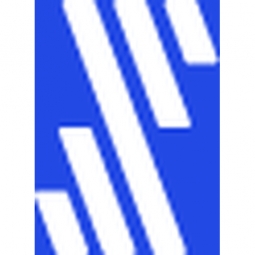Technology Category
- Application Infrastructure & Middleware - Data Exchange & Integration
- Functional Applications - Enterprise Resource Planning Systems (ERP)
Applicable Industries
- Apparel
- E-Commerce
Applicable Functions
- Maintenance
- Procurement
Use Cases
- Last Mile Delivery
- Time Sensitive Networking
Services
- System Integration
- Testing & Certification
About The Customer
Parachute Home is a direct-to-consumer brand based in the U.S. that sells home essentials such as bedding, bath linens, decor, furniture, and more. The brand has found success by offering exceptional affordability, quality, and innovation. To compete with bigger brands, Parachute needed to centralize data from its core systems, Shopify and NetSuite’s cloud ERP software, to improve customer retention and drive sales. The brand is digitally native and ambitious, aiming to stand up and test proof-of-concepts quickly.
The Challenge
Parachute Home, a U.S.-based direct-to-consumer brand selling home essentials, was struggling to manage data from its two core systems, Shopify and NetSuite’s cloud ERP software. Shopify powered Parachute’s ecommerce platform and transactional process, while NetSuite triggered the fulfillment process. However, these systems were running in a siloed manner, making the data from both sides increasingly hard to manage. Parachute was using custom-built data loaders to connect into Shopify and NetSuite, but the results were inconsistent. There were data quality problems that resyncing rarely solved, and the absence of logs made it hard to identify issues. The time-consuming data ingestion process was hindering the brand's digital ambitions.
The Solution
To simplify data integration and automate backend processes, Parachute implemented Fivetran’s cloud-native, pre-built connectors to Shopify and NetSuite. These connectors enabled the generation of business-critical insights, from orders per day to margins and profitability. Reports and forecasts were easily surfaced in Looker and shared with different business divisions. The data could be analyzed in multiple ways, aiding various teams in their functions. For instance, finance used it to match orders against forecasts, the product team tracked orders and sales, customer service troubleshooted delays in the fulfillment lifecycle, and merchandising teams analyzed the performance of newly launched products. Fivetran connectors were regularly updated as NetSuite and Shopify changed their APIs, ensuring constant syncing of critical fields.
Operational Impact
Quantitative Benefit

Case Study missing?
Start adding your own!
Register with your work email and create a new case study profile for your business.
Related Case Studies.

Case Study
Fire Alarm System and Remote Monitoring Sytem
Fire alarm systems are essential in providing an early warning in the event of fire. They help to save lives and protect property whilst also fulfilling the needs of insurance companies and government departments.Fire alarm systems typically consist of several inter-linked components, such as smoke detectors, heat detector, carbon monoxide, manual call points, sounders, alarm and buzzer. The fire alarm system should give immediate information in order to prevent the fire spread and protect live and property.To get maximum protection a shoe manufacturer in Indonesia opted for a new fire alarm system to monitor 13 production sites spread over 160 hectars. Although the company had an existing fire alarm system, it could not be monitored remotely.It was essential that the new system would be able to be monitored from a central control room. It needed to be able to connect to the existing smoke detector and manual call point. Information should be easily collected and passed on to the Supervisory Control and Data Acquisition (SCADA) system. Furthermore, the system should have several features such as alarm management, auto reporting, being connected to many client computers without additional cost, and run 24/7 without fails. The company also needed a system which could be implemented without changing the architecture of the existing fire alarm system.

Case Study
IoT Applications and Upgrades in Textile Plant
At any given time, the textile company’s manufacturing facility has up to 2,000 textile carts in use. These carts are pushed from room to room, carrying materials or semi-finished products. Previously, a paper with a hand-written description was attached to each cart. This traditional method of processing made product tracking extremely difficult. Additionally, making sure that every cart of materials or semi-finished products went to its correct processing work station was also a problem. Therefore, the company desired an intelligent solution for tracking assets at their factories. They also wanted a solution that would help them collect process data so they could improve their manufacturing efficiency.

Case Study
Retailer Uses RFID Scanner to Improve Efficiency
Patrizia Pepe wished to improve the logistics of their warehouse: accepting incoming goods from their production sites, movement of items throughout
the warehouse, and packaging of goods for distribution to the retail locations. They initially tried to use barcodes for this function. Because barcodes must be individually scanned within a line-of-sight, the acceptance of goods coming into the warehouse was too time consuming. Working with the University of Florence, Patrizia Pepe instituted a five-month pilot project beginning in August of 2009 to test the validity of an RFID solution. The pilot involved tagging of about 60,000 items for the second seasonal collection, and convinced the company to move forward with tagging all items.

Case Study
Monitoring and Controlling Automatic Mixing and Dispensing Machines
As technology advances, textile manufacturing has been transformed from a labor-intensive to a partially or fully automated industry. Automation is significant in all segments of textile production - from spinning to printing, and textile machinery manufacturers are constantly searching for new technologies and automation processes will increase the productivity of their machines. The color paste mixing and dispensing machine is an essential part of the printing and dyeing process. With the advantage of automatically computerized controls and database management, the system can significantly improve its dispensing precision, working efficiency and production quality as well as reducing material consumption.

Case Study
Digital Transformation of Atlanta Grout & Tile: An IoT Case Study
Atlanta Grout & Tile, a Tile, Stone & Grout restoration company based in Woodstock, Georgia, was facing challenges with its traditional business model. Despite steady growth over the years, the company was falling behind the web revolution and missing out on the opportunity to tap into a new consumer base. They were using independent software from different vendors for each of their department information and workforce management. This resulted in a lot of manual work on excel and the need to export/import data between different systems. This not only increased overhead costs but also slowed down their response to clients. The company also had to prepare numerous reports manually and lacked access to customer trends for effective business decision-making.




